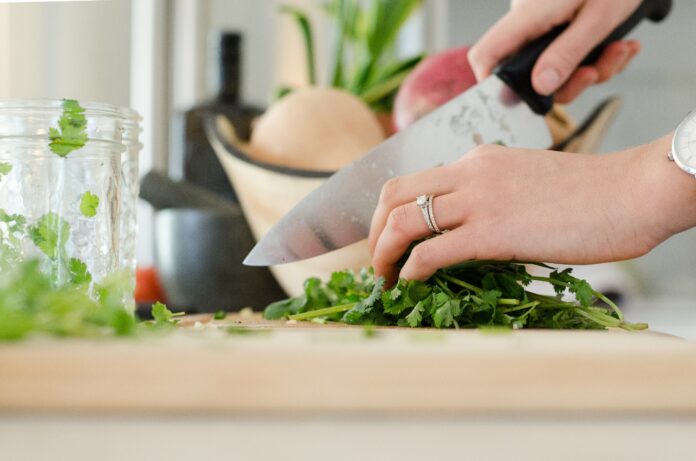Cooking is an essential, yet often neglected skill that learning to do properly can have a significant impact on quality of life. Beyond just being easier on your wallet, home-cooked food tends to be much more nutritious and contain lighter quantities of calorically dense ingredients and sodium than its store-bought and restaurant counterparts. Whether you’re a professional chef or just starting out, one of the most important aspects of cooking to master is knife skills, as the vast majority of recipes require cutting and chopping. Read on to learn more about a few basic knife skills that everyone should know.
Proper Grip & Safety
Before starting with anything else, make sure that you’ve got a secure grip on your knife. Hold the handle firmly with your dominant hand and place your thumb and index finger on either side of the blade’s base. Curl your other fingers around the handle, keeping your fingers tucked in and away from the blade’s edge while cutting. When walking with a knife, hold it pointing downward at your side with the blade facing away from you. Sharpen your knives regularly and store them in a safe place when not in use.
Rocking Motion
The rocking motion is essential for efficient chopping and mincing of herbs, garlic, and most vegetables, allowing for precision and even cuts. Begin by placing the tip of the knife on the cutting board, then move the handle up and down as you cut the ingredients to your desired size. Keep the blade in contact with the board, working slowly until you feel comfortable enough to increase your speed.
Claw Grip & Slicing
To protect your fingers and ensure consistent slicing of round produce like onions and tomatoes, the claw grip is considered the gold standard. Curl the fingers of your non-cutting hand inwards to create a claw-like shape, holding the item to be sliced in place. With your other hand, carefully guide the knife through your ingredient, maintaining a steady rhythm and keeping the blade’s tip in contact with the cutting board.






